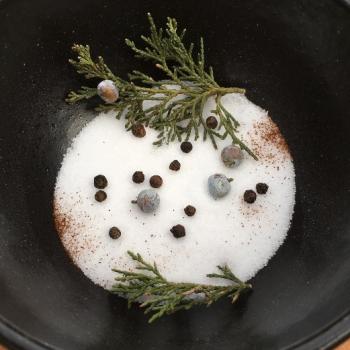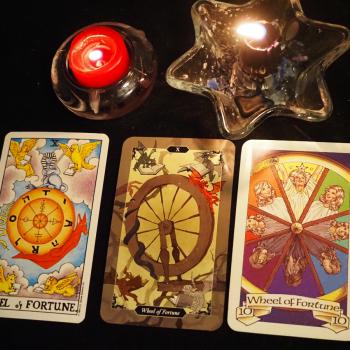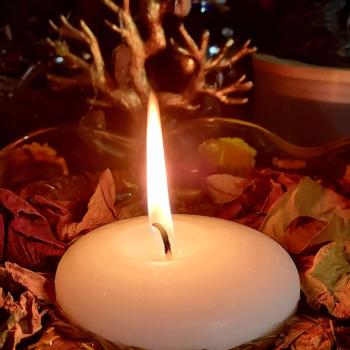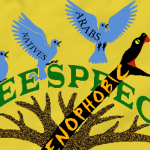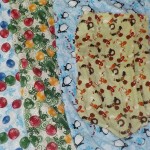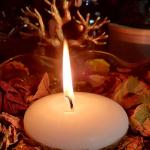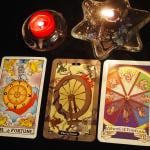F.N.A.E. articles are written with Solterrestriale Vocabulum (Solar-Earth Terms)
What is Seasonally Occurring
The earth’s current orientation has Australis (the southern hemisphere) gaining more daylight with the daily turning view of the sun becoming higher along the north horizon. Spring is occurring. Migrations move southward and start the avian mating season. For most of Australis the dry season is ending with the arrival of the tropical rain belt, heralding the growing season.

The equator will be seeing the daily turning view of the sun further south. This is when the Tropical Rain Belt is moving southward past the equator moving toward the Australis Sol Axis.
For Borealis (the northern hemisphere) the days are getting shorter, seeing the earth’s daily turning view of the sun lower on the southern horizon. Deciduous trees have leaves changing colour and are loosing, or have lost all their leaves. Wildlife are either migrating or preparing for winter by storing food in their environment or body fat, the later doing so to prepare for hibernation. Hibernating species may already be hibernating, and migrating species may have already left the cooler and more northern regions. Depending on crops, weather and climate, most regions in borealis are already done their major annual harvest.
Seasonal Customs
Australis is celebrating spring – new growth and life. Flowers blooming, birds nesting, and pollinators abuzz.
Australis activities around Translux include: Watching the ti kouka / cabbage tree to see if a good flowering would occur, if so it is said to be a sign that a long, fine summer will follow; Wildcrafted flowers would be put out in a mandala display; Flower costumes (especially floral crowns, necklaces, and wrist/ankle bands) and costumes themed on wings of butterflies, bees, or birds; Bird, Bumble Bee and flutter bug themed kite flying; making ‘seed bombs’ and dispersing them in the area; Making butterfly and bird landart that can be posed with (like snow angels); Chocolate eggs are gifted to friends and family; simple origami flutter bugs decorate public spaces that can have notes of hopes for the year and some seeds to sprout from them when they inevitably disperse; bread buns in the shape of chicks are made; opening ceremony of ‘pollinating’ each other with yellow powder; children paint hands as pollinators and ‘pollinate’ punch box flowers to get a seasonal treat.
Borealis is celebrating the end of harvest, the year’s hard work and giving thanks. As the nights are longer lights are brought into celebrations and symbolisms along with that light. The darkness and now dormant vegetation brings considerations of death and so death is also themed in events.
Borealis activities around Transnox include: Feasts from the harvest: North America typically having turkey and pumpkin pie, with apple pie being the most accessible throughout Borealis; Giving thanks for the harvest and preceding year; Remembering those that have died through various expressions such as tending graves or making the deceased’s favourite meal, some traditions involve inviting ancestors to the feast; pasture livestock are brought back down from the summer pastures; Selected livestock are slaughtered for the winter stores; Bonfires, lanterns, fireworks, and other various light displays to lighten the earlier nights; Colouful rangoli art in open areas in and out of the home; hair put in fishtail braids as a reminder of the salmon’s sacrifice for the prosperity of future generations; seed exchanges made from the year’s harvest and the seeds that need winter stratification are planted; earth looms that were hung over or by the threshold is placed in garden/forest to rot away and as a practice of ‘letting go’ as a way of acknowledging that nothing stays the same forever; feast themed on the circle of life where the food is depicted as floraliated dead creatures to remind feasters of how death sustains life. Those depicted in human forms are as a reminder that those who have died in the past have dispersed into the land and the food in the area that is now being eaten; Floral and mycelia facepaint is donned as symbolism of own eventual dispersal.
BOREALIS
|
CELEBRATION |
GENERAL DATE |
SPECIFIC DATE |
CALENDAR |
REGION OF ORIGIN |
CULTURE |
|
October to November |
2nd Monday in October (Canada); 1st Thursday in November (Liberia); 4th Thursday in November (USA) |
North America |
European Settlers |
||
|
Late November |
二十三日 (nijūsan-nichi) 十一月 (jūichigatsu), 23rd of November |
Japanese calendar |
East Asia |
Japanese |
|
|
Transnox |
Early November |
Midway Equinox & Solstice, Artiodactyla – Cervid 15/16, November 5/6 |
Earth |
Saegoah |
|
|
Late October |
October 31st |
North Western Europe |
Celtic |
||
|
Allantide Kalan Gwav, meaning first day of winter, or Nos Kalan Gwav, meaning eve of the first day of winter |
Late October |
31st October |
North Western Europe |
Cornish |
|
|
Late October – Early November |
13th day of Ashvin अश्विन् to the 2nd day of Kārtika, October 22nd, Correlates with 2nd New Moon after Equinox |
Hindu Lunisolar calendar |
Southern Asia |
Hindu |
|
|
Late October – Early November |
October 31st to November 2nd |
Middle America |
Mexican |
AUSTRALIS
|
CELEBRATION |
GENERAL DATE |
SPECIFIC DATE |
CALENDAR |
REGION OF ORIGIN |
CULTURE |
|
Beltane |
Late October/Early November |
October 31st/ November 1st |
North Western Europe |
Celtic |
|
|
Late October |
Whiringa-ā-nuku / Oketopa ? , Midway Equilux and Lux |
unknown |
Oceania |
New Zealand / Maori |
|
|
Translux |
Early November |
Midway Equinox & Solstice, Artiodactyla – Camelid 15/16, November 5/6 |
Earth |
Saegoah |
Please let me know about any relevant celebrations that were missed





